******The Project is supported by the Government of Uganda through the Makerere Research and Innovations Fund (MakRIF).

Overview
African swine fever (ASF) is a highly contagious viral haemorrhagic disease of domestic pigs; and has recently spread to new areas including Eastern Europe and in Asia as far as Papua New Guinea. This disease has neither vaccine nor treatment and is currently a big challenge to many smallholder pig farmers in Uganda. In Uganda, ASFV genotype IX has been reported to cause outbreaks on a regular basis and is an impediment to development of the swine industry. The disease was previously reported with a mortality of 100%. However different forms of the disease have recently been observed in domestic pigs. Indeed, some studies have shown that pigs that survive ASF become resistant to the same viral isolates although they do not produce classical neutralizing antibody. These observations could have the key for vaccine development strategies.

The research project
Through a project titled “African swine fever virus (ASFV) severity and viral genomic structural features: opportunities for development of a vaccine in Uganda”, a team of researchers led by Prof. Charles Masembe from the Department of Zoology, Entomology, and Fisheries Sciences at Makerere University registered the need to correlate clinical studies of ASF virus with full genome sequences and virus structural data to identify potential candidate genes for vaccine development. The team set out to isolate and characterise highly virulent and low virulent ASF viruses circulating in the swine population in Uganda using next-generation and Electron Microscopy to inform the development of ASFV vaccines and other therapeutic strategies. The team also set out to sequence the whole genome of low and high-virulence African swine fever viruses circulating in the domestic pig population in Uganda; compare the whole genome sequences of low and high-virulence ASF viruses in Uganda, and to find genomic variations and their effects on the virulence and viral evolution. Whole blood and organ tissue samples together with clinical-epidemiological information, were collected from acute and chronic cases of pigs in reported ASF outbreaks in the districts of greater Masaka, Greater Gulu, Mukono, Wakiso, Kakumiro, and additionally in other districts were outbreaks were reported during the study period. The project was supported by the Government of Uganda through the Makerere Research and Innovations Fund (MakRIF). Other members on the project are; Assoc. Prof. Vincent Muwanika (Co-PI), Dr. Rose Ademun (Scientist), Dr. Mathias Afayoa (Scientist), Dr. Tony Aliro (Field Scientist), Mr. Peter Ogweng (Field Scientist), Mr. Mayega Johnson Francis (Lab Technologist), Okwasiimire Rodney (Lab Technologist), and Mr. Bright Twesigye (Administrator).
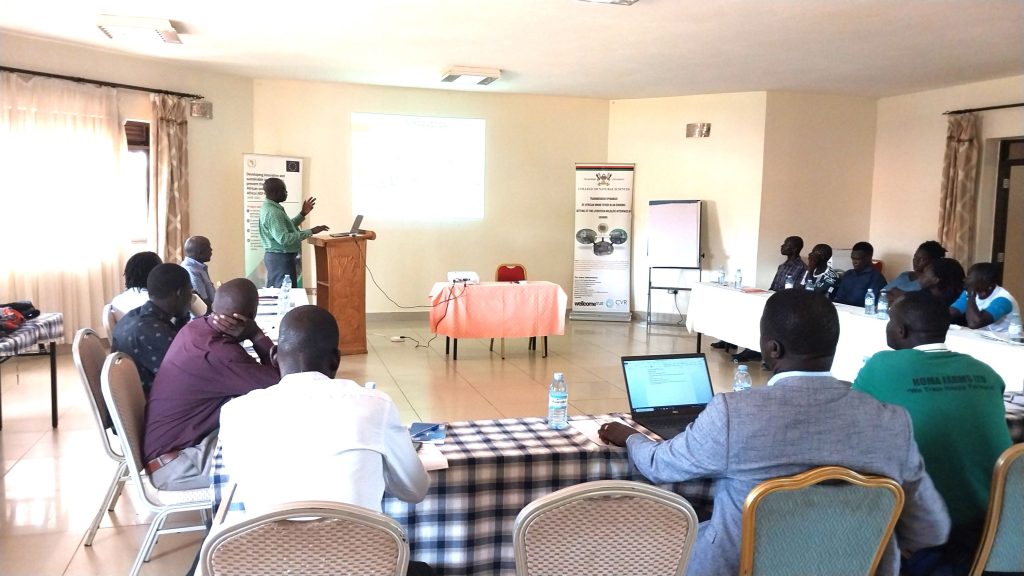
Dissemination of the research findings
On 15th May 2024, the project team held a workshop at Doves Nest Hotel in Gulu District to disseminate the research findings, and to fact check by mapping pig farms, abattoirs, slaughter slabs, and pork restaurants in both Gulu District and Gulu City for on-going and future research.
The workshop was officially opened by the Assistant Chief Administrative Officer (CAO) of Gulu District, Mr. Oryem Auric on behalf of the CAO. In his remarks, Mr. Okidi appreciated the project team, noting that the workshop was timely since piggery as a poverty alleviation programme had been embraced by most farmers as a replacement for cattle. Sharing his experience, he expressed concern over the increasing threat of ASF, a factor he said was undermining the growth of the swine industry in Uganda.
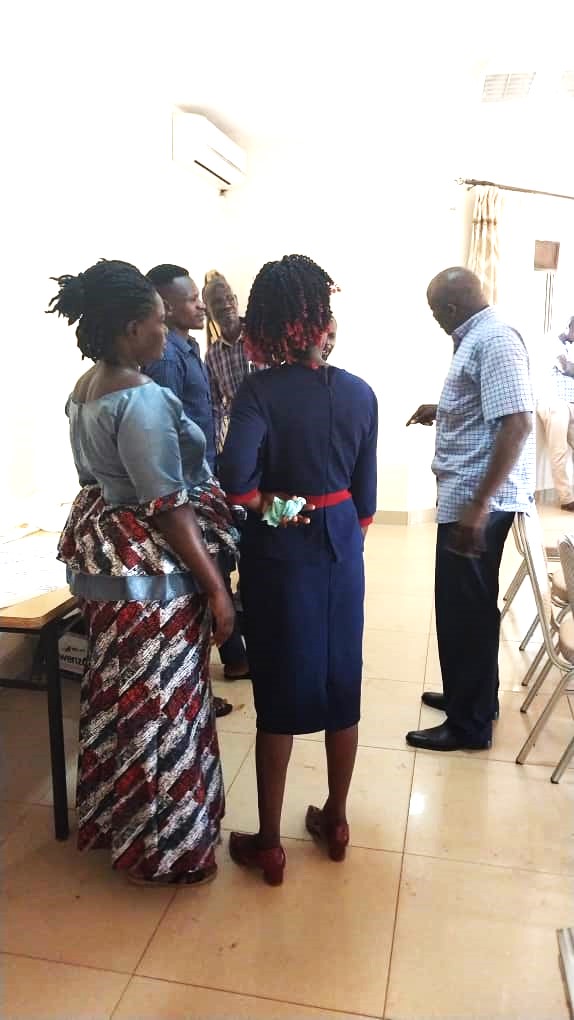
During the meeting, the Project PI, Prof. Charles Masembe presented the status of ASF research in Uganda and globally, highlighting the complexity of ASF, dangers of ASF, ASF diagnostic advances, importance of keeping pigs and scientific efforts to control ASF, including the advances in the development of the ASFV vaccine.
Other presentations focused on ASF control and prevention mechanisms, potential role of production systems in ASF transmission, community involvement in disease control, spatio-temporal spread of ASF at the wildlife-livestock interface, the role of carrier pigs in ASFV transmission and maintenance, biosecurity implementation and challenges. All these presentations evoked discussion points from the participants. Participants expressed the need to understand how ASF is transmitted, and the extent to which farmers can trust veterinarians since they are considered to spread the disease. They highlighted the need to institute quarantine during ASF outbreaks and called for sensitization on the acceptable methods for disposing off infected pork. Another concern arising from the meeting was the need to understand if ASF is zoonotic and if not, why ASFV infected pork should not be eaten. Participants also sought guidance on why farmers should continue to keep survivor pigs if they spread ASFV, and why the government has not constructed slaughter slabs in all villages to control the spread of ASFV.
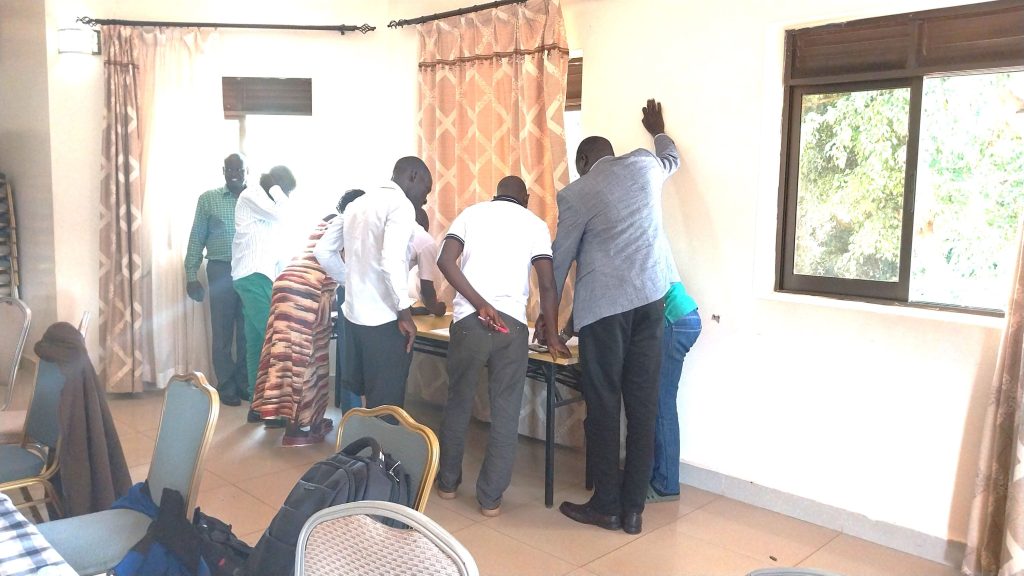
Recommendations by participants;
- Strengthening community awareness through different production departments in the district and city by organizing workshops as closer to the farmers as possible for example at every parish or ward.
- Makerere University ASF research team should collaborate with Gulu University, Faculty of Agriculture and Environmental Studies so that ASFV diagnosis and research is jointly done at the University which is nearer to the farmers for quick response to ASF outbreaks.
- City, District, and sub-county leaders should formulate a by-law to enforce the implementation of ASF control and prevention methods.
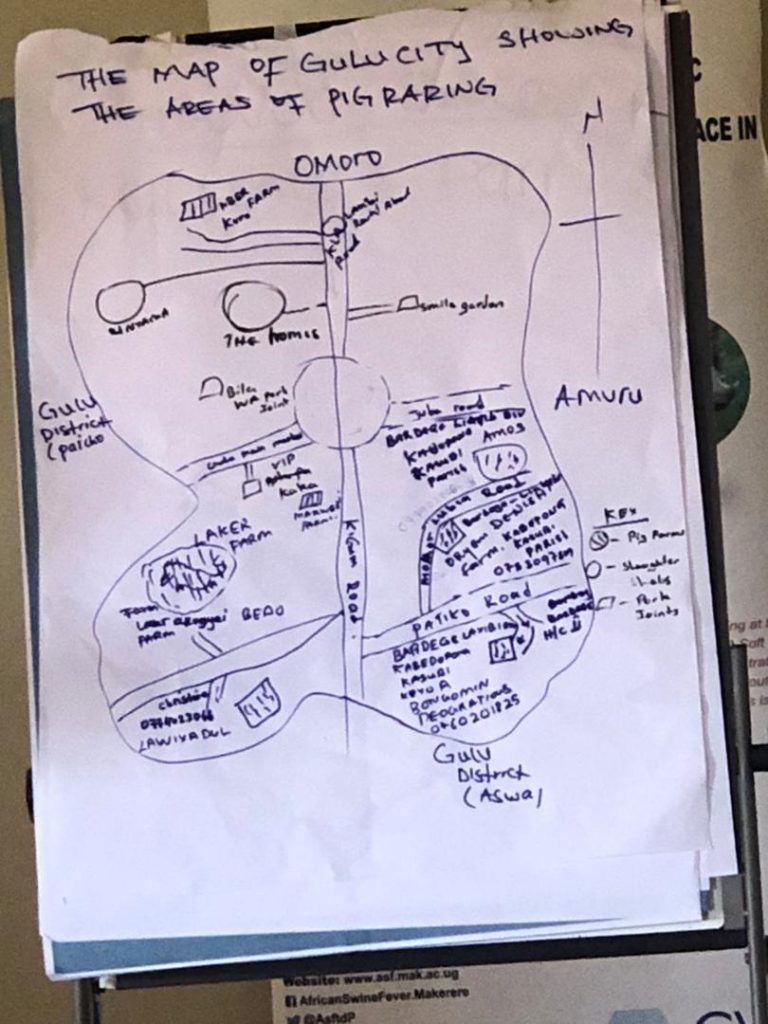
Mapping pig farms/farmers, abattoir/slaughter slabs and pork restaurants
During plenary, participants were tasked with mapping pig farms/farmers, abattoir/slaughter slabs and pork restaurants in their respective sub-counties in Gulu District and Gulu City, in addition to generating a comprehensive farm/farmer list in the two areas. Mapping was successfully done and presented for purposes of clarity by each team representing a particular sub-county. The participants were then given a template to populate on the farm/farmer list since they could not recall all farms/farmers name and their mobile phone contacts.
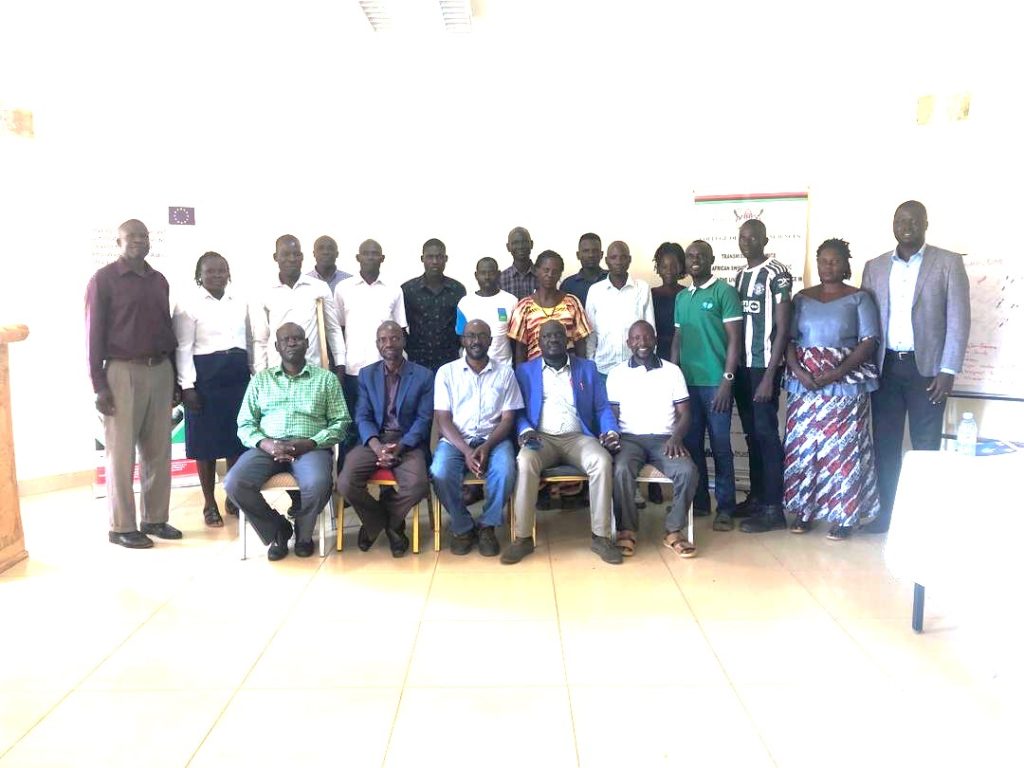
Remarks by Gulu District RDC
In his closing remarks, the RDC of Gulu District, Mr. Okidi Cosmas James thanked the research team for choosing the district for the workshop, noting that the feedback from the participants indicated that the workshop was very beneficial to them. He pledged to dedicate some of the free airtime offered to his office on Radio Mega, a popular FM Radio Station in Gulu City affiliated to Radio Uganda, towards the popularization of the project activities. He reiterated that the objectives of the project were in line with the current Government of Uganda programme on wealth creation through the Parish Development Model and the 4 acre model of which piggery is one of the means recommended for poverty alleviation by the President of Uganda. He called on the farmers to embrace and utilize the knowledge acquired to improve their farms and increase their household incomes.
